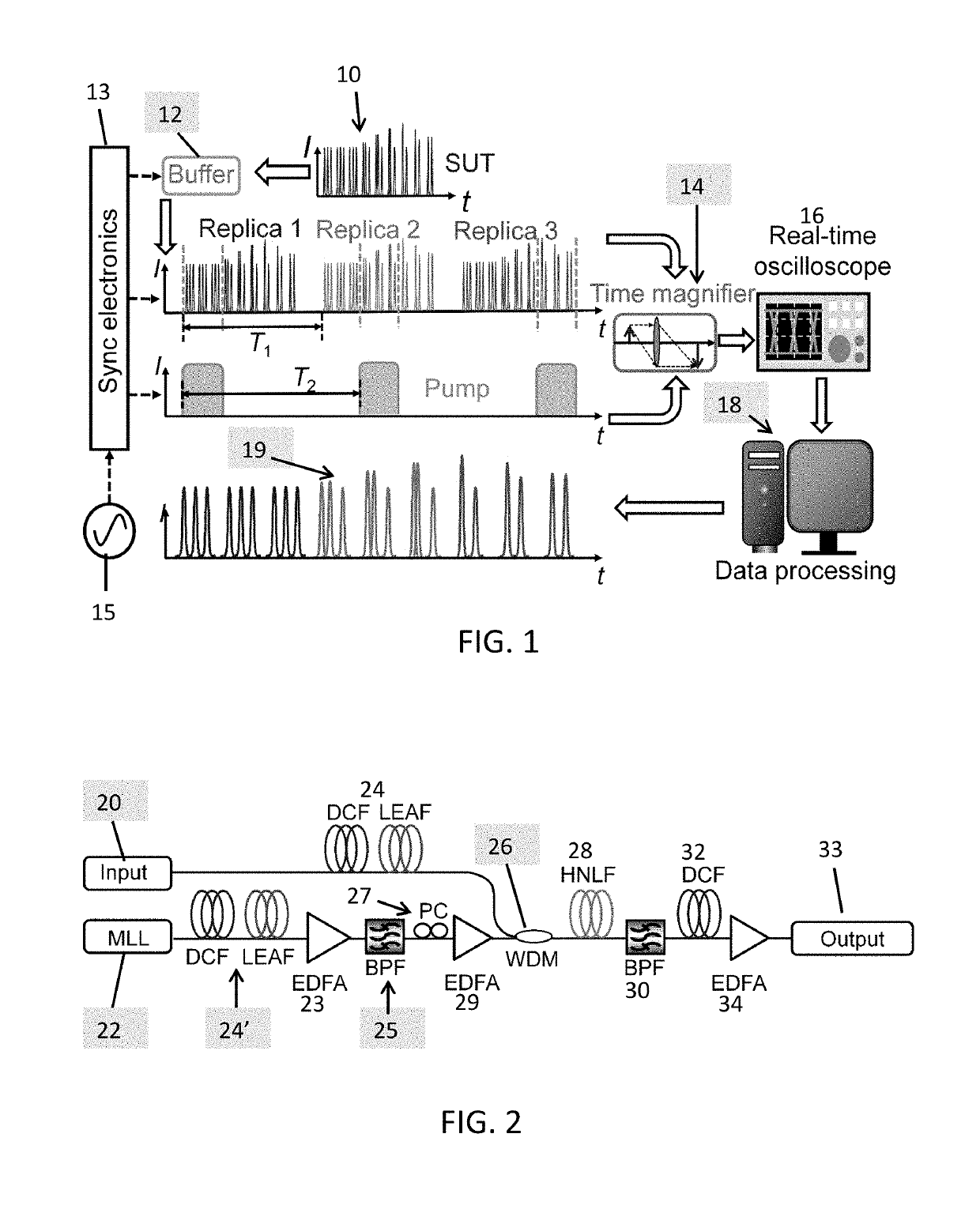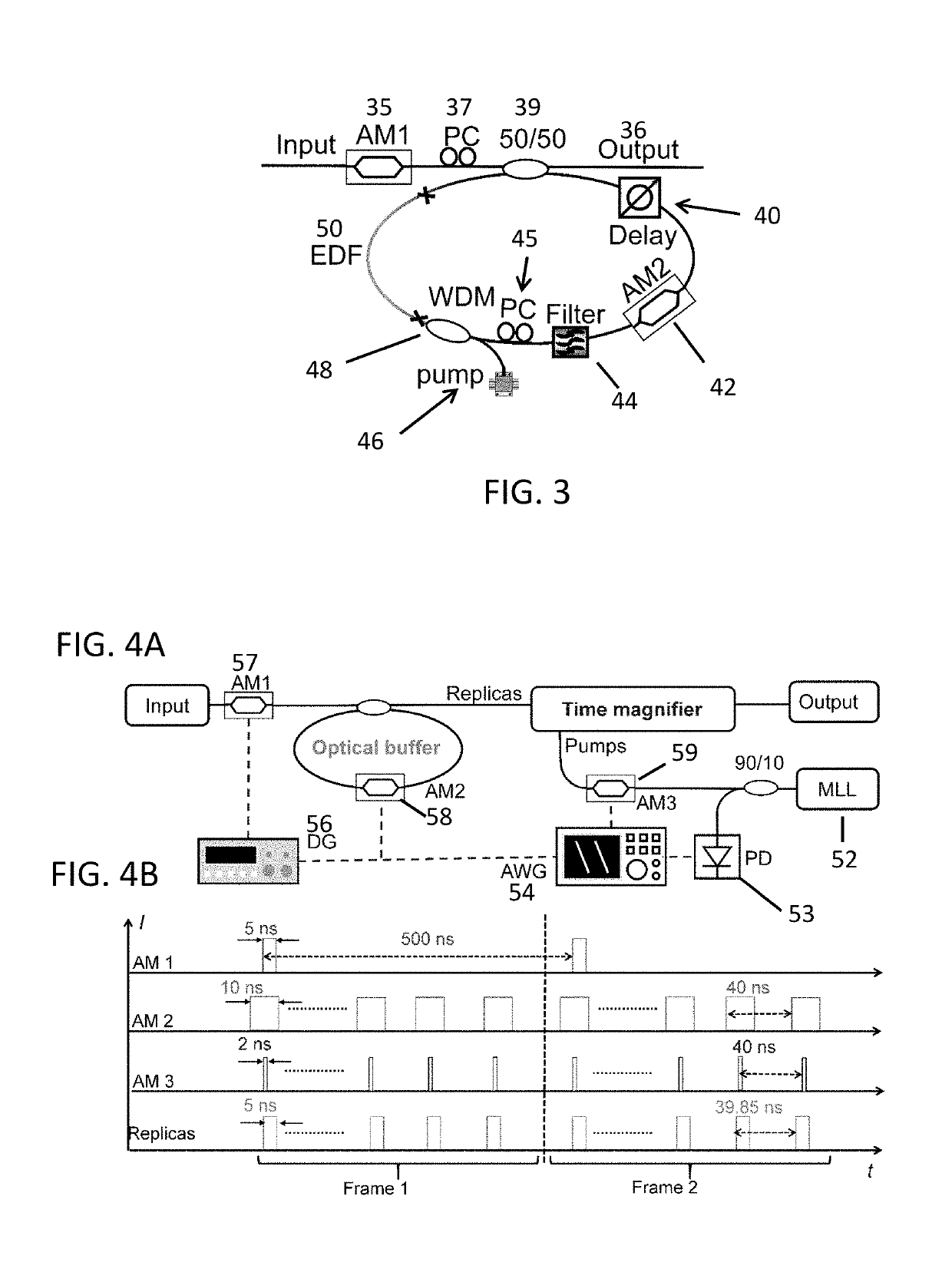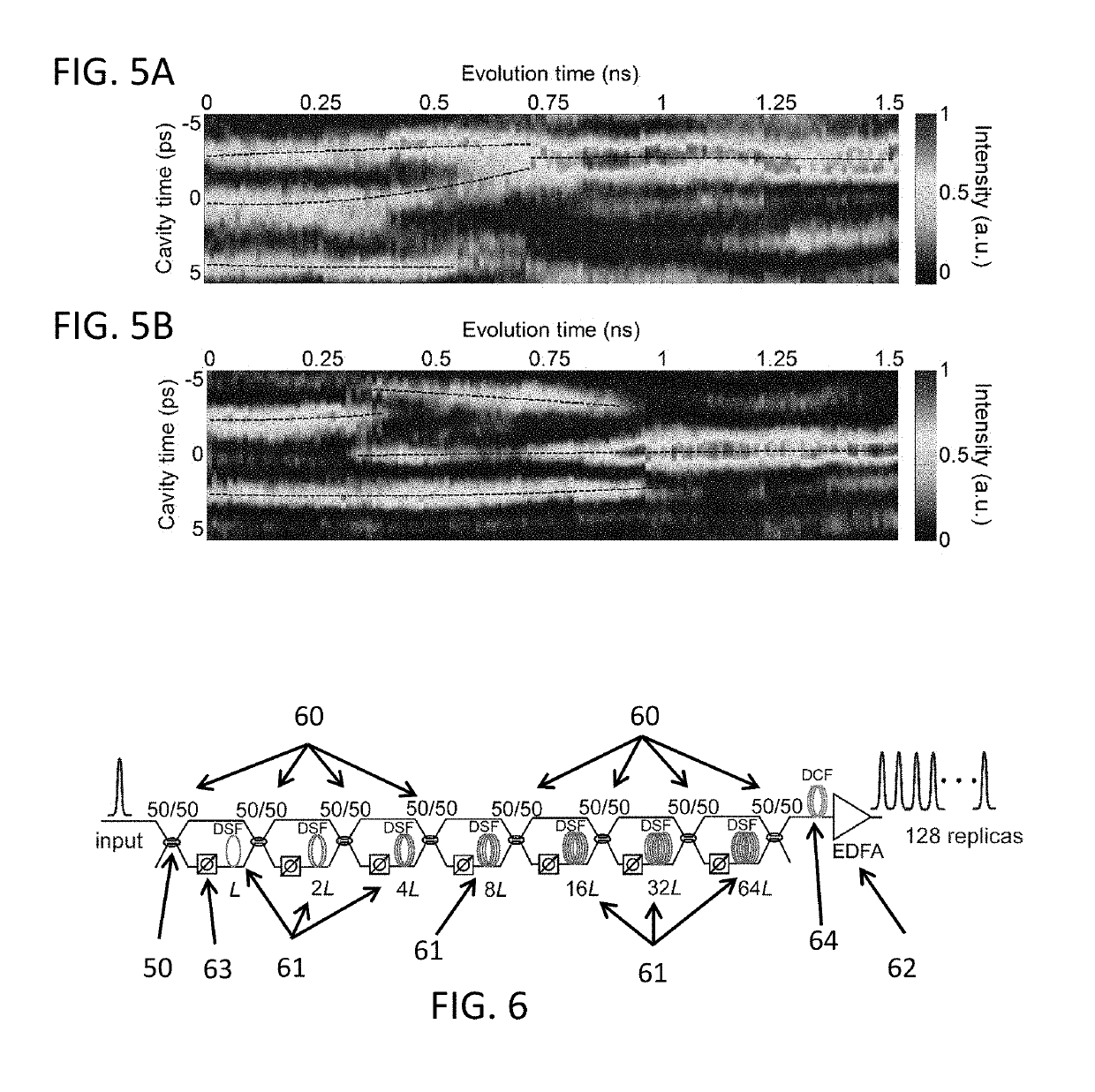Panoramic reconstruction of temporal imaging
a temporal image and panoramic reconstruction technology, applied in the field of temporal imaging, can solve the problems of affecting the application of temporal imaging systems to the study, affecting the accuracy of temporal imaging, and significant challenges in experimental real-time observation
- Summary
- Abstract
- Description
- Claims
- Application Information
AI Technical Summary
Benefits of technology
Problems solved by technology
Method used
Image
Examples
Embodiment Construction
[0021]FIG. 1 shows how the PARTI system overcomes the limitation of TBWP in conventional temporal imaging systems and thus captures slowly-evolved soliton dynamics. The signal under test (SUT) 10 is an exemplary pulse train. Since the SUT is transient and non-repetitive, the concept of image stitching in the spatial domain cannot be conveniently adopted in temporal imaging systems. To address this problem, a fiber-loop based optical buffer 12 is integrated with a time magnifier 14 to realize temporal scanning using stroboscopic signal acquisition, a technique commonly adopted in sampling oscilloscopes. As shown in FIG. 1, the optical buffer 12 in the PARTI system creates multiple identical replicas of the signal under test with a constant time interval. These replicas will be subsequently measured by the time magnifier 14 that follows the buffer. Thus the temporal scanning on a transient SUT is realized.
[0022]Using the optical buffer 12, the SUT replicas can be generated with a pre-...
PUM
 Login to View More
Login to View More Abstract
Description
Claims
Application Information
 Login to View More
Login to View More - R&D
- Intellectual Property
- Life Sciences
- Materials
- Tech Scout
- Unparalleled Data Quality
- Higher Quality Content
- 60% Fewer Hallucinations
Browse by: Latest US Patents, China's latest patents, Technical Efficacy Thesaurus, Application Domain, Technology Topic, Popular Technical Reports.
© 2025 PatSnap. All rights reserved.Legal|Privacy policy|Modern Slavery Act Transparency Statement|Sitemap|About US| Contact US: help@patsnap.com



